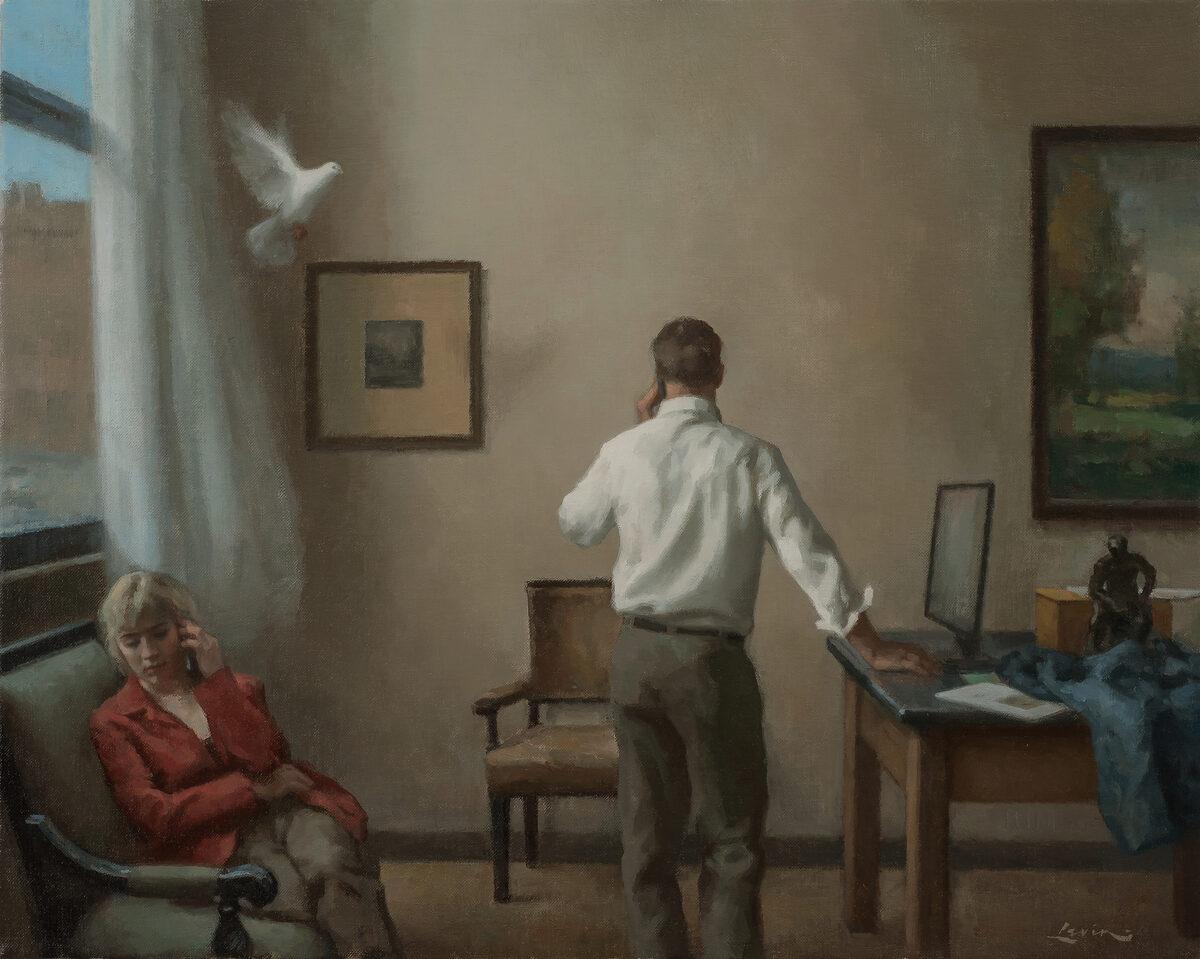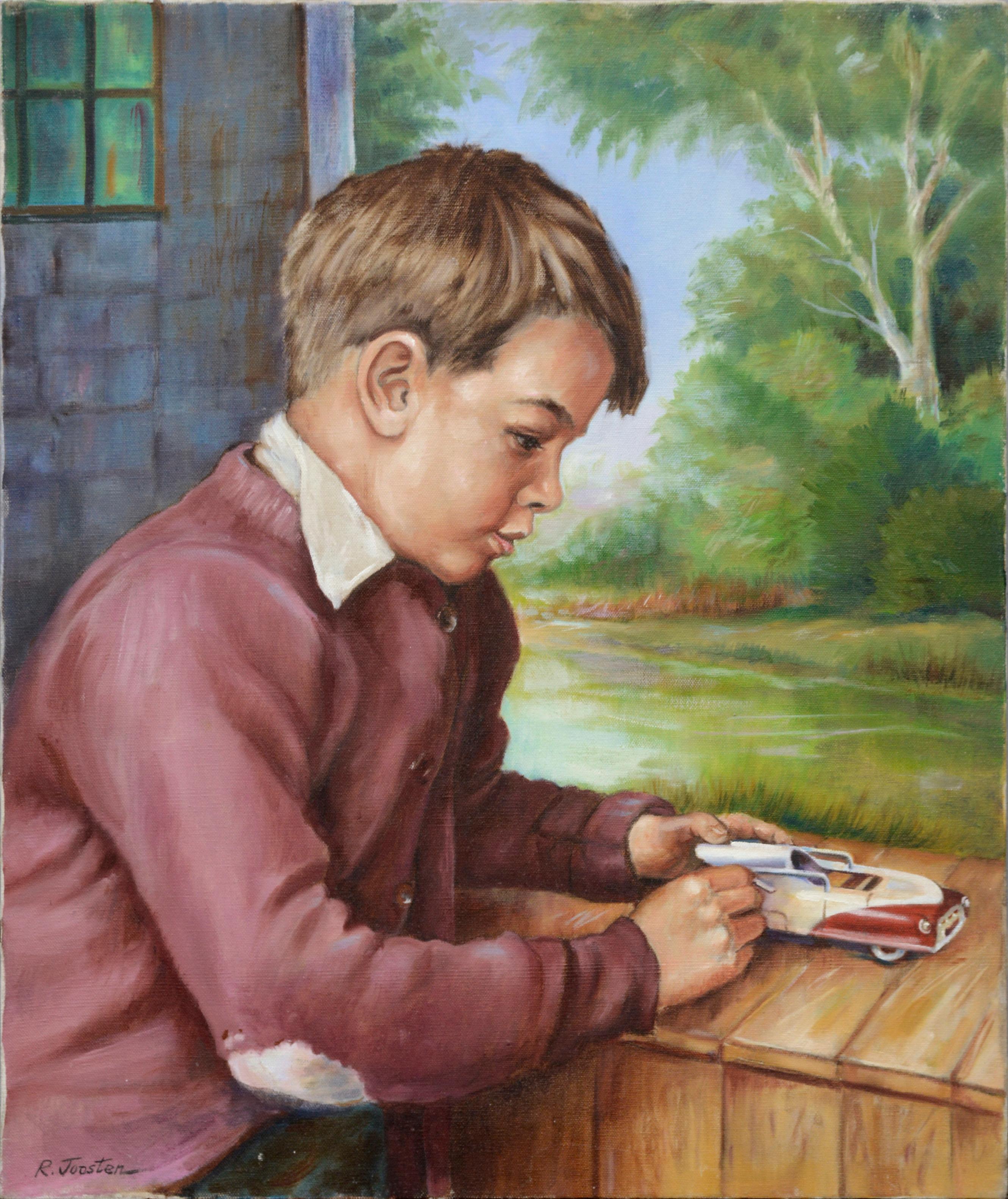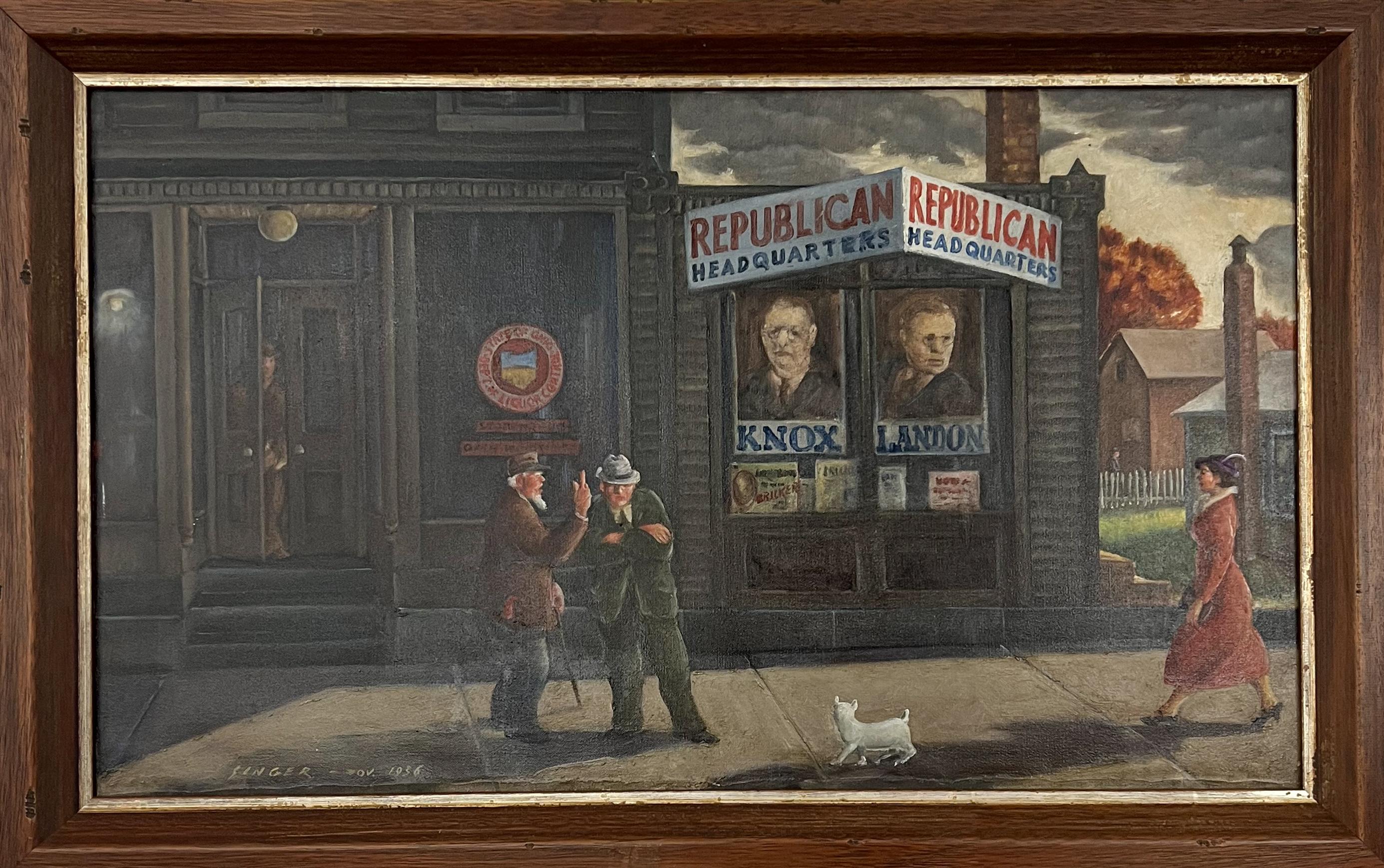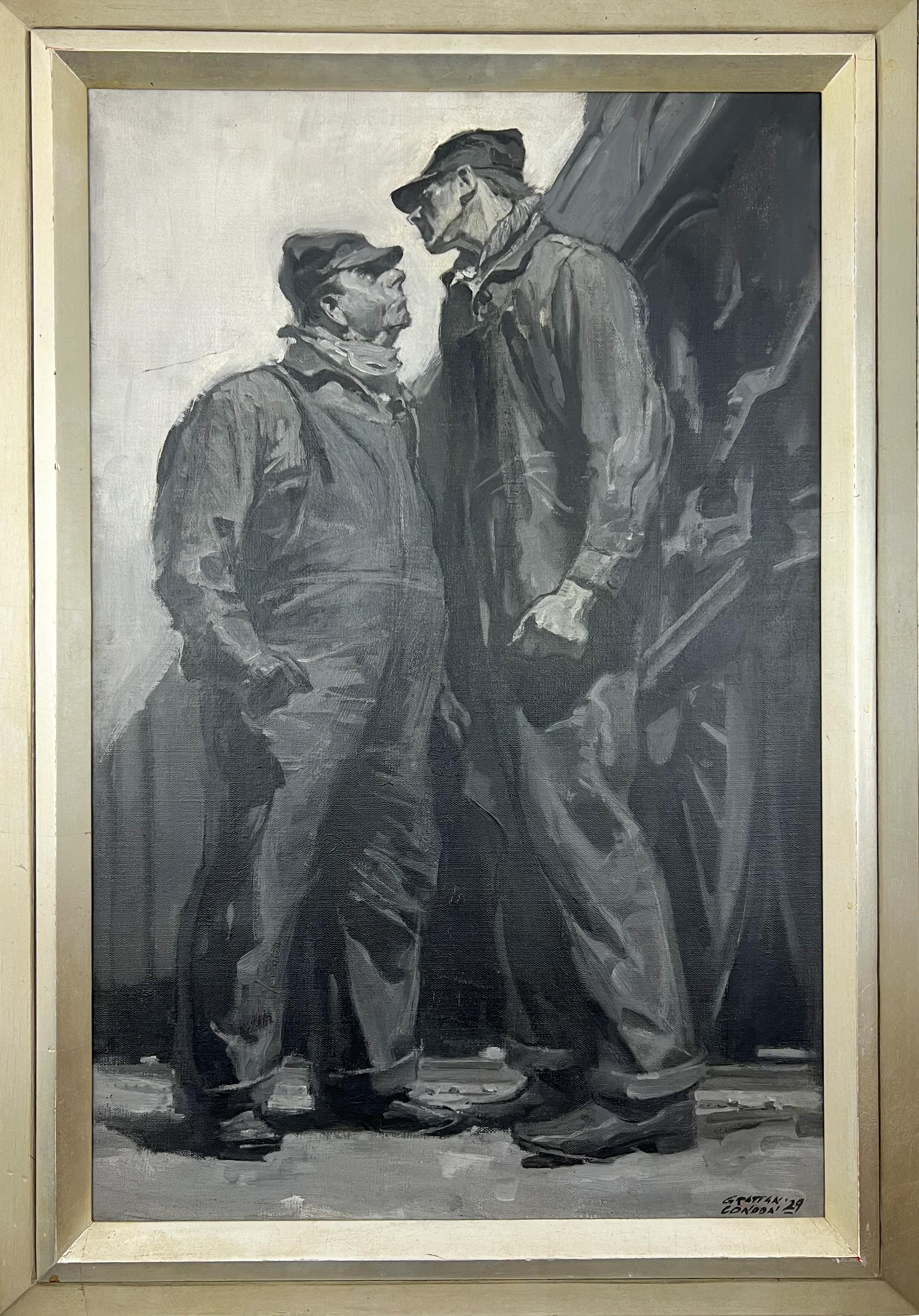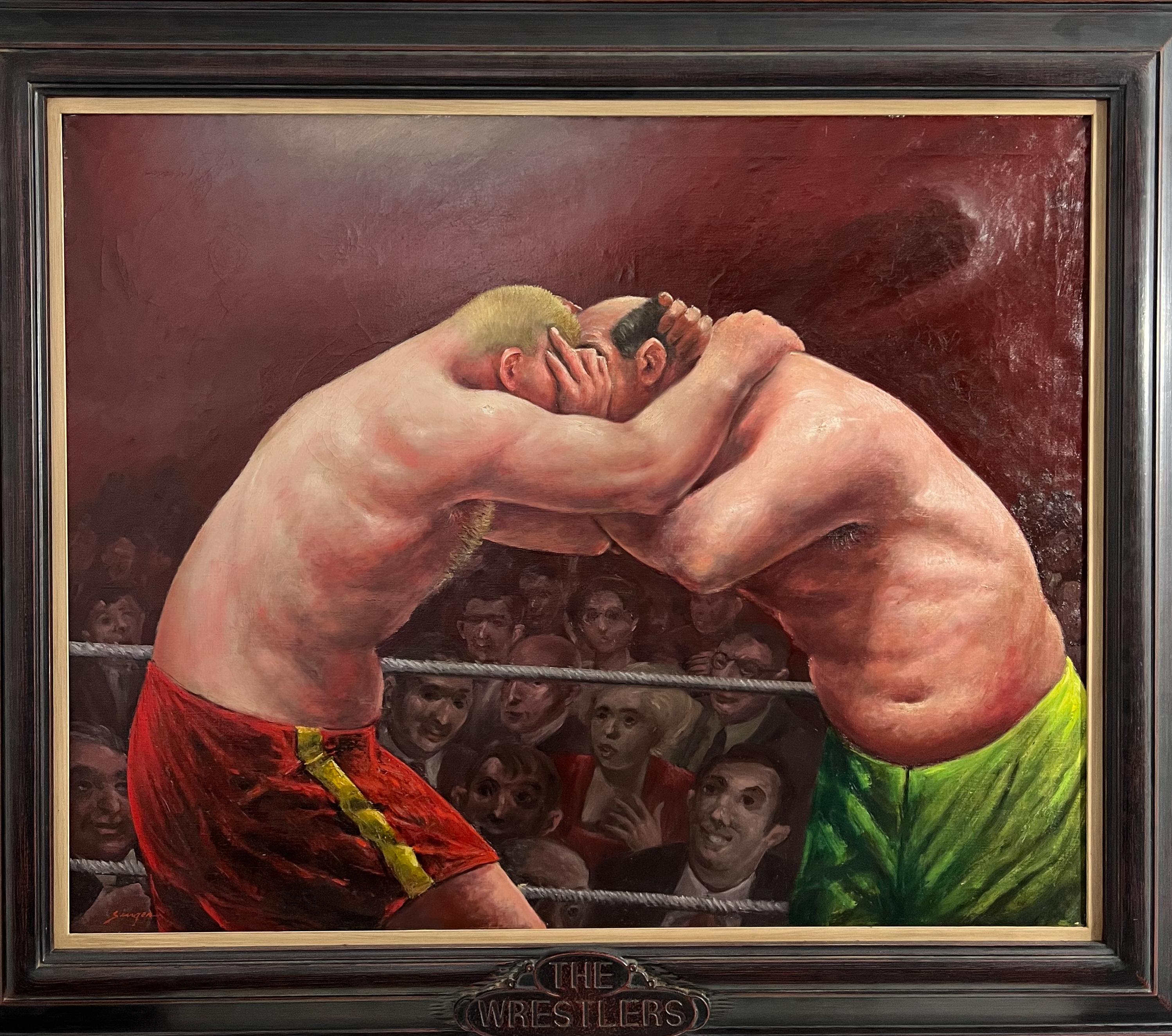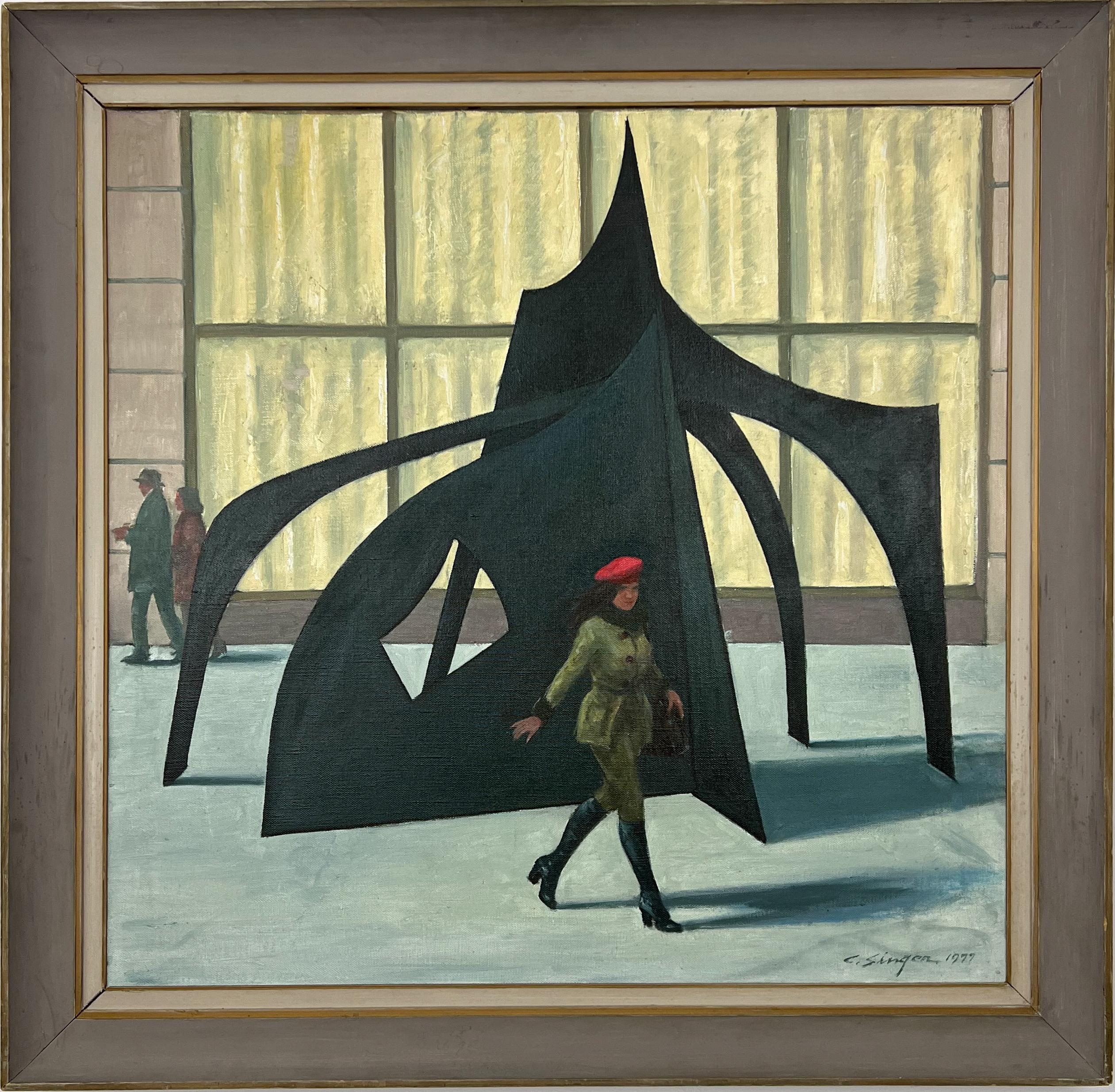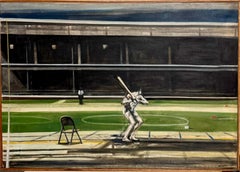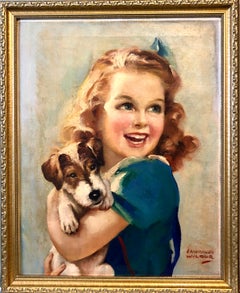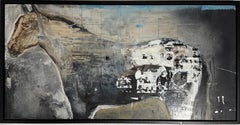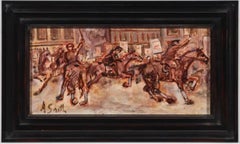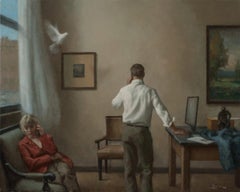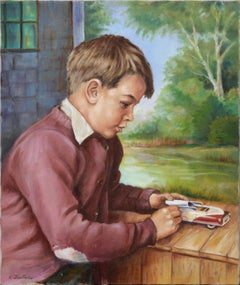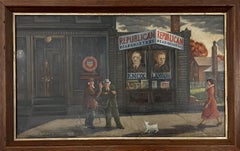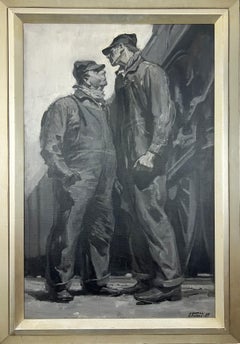Items Similar to Band Of Street Urchins (Charles Dickens) Large Oil Painting
Want more images or videos?
Request additional images or videos from the seller
1 of 6
Barry Leighton-JonesBand Of Street Urchins (Charles Dickens) Large Oil Painting
On Hold
$2,800
On Hold
£2,113.08
On Hold
€2,419.16
On Hold
CA$3,948.93
On Hold
A$4,335.43
On Hold
CHF 2,261.80
On Hold
MX$52,464.75
On Hold
NOK 28,348.20
On Hold
SEK 26,711.45
On Hold
DKK 18,058.39
About the Item
Genre: Other
Subject: People
Medium: Oil
Surface: Canvas
Country: United Kingdom
Dimensions: 48" x 36" x 3/4"
Dimensions w/Frame: 48 3/4" x 37"
Barry Leighton-Jones was born in London, England in 1932 and is a direct descendant of the Victorian artist and President of the Royal Academy, Lord Frederic Leighton. He began his artistic career at the age of five by winning a major art competition, and later completed seven years of academic training at Sidcup and Brighton and was tutored by the acclaimed English artist and illustrator from the Royal College of Art - John Minton.
After launching himself straight into the British art world, his paintings were very quickly in demand - many of them were published and his international reputation grew. But the real breakthrough came in 1985, when he was selected by the Kelly Estate to create a series of images based on the life and work of the famous American clown - Emmett Kelly.
Taking a page out of Norman Rockwell's book, Leighton-Jones devoted a great amount of time to the preparation stage more than ever before. The Kelly Estate supplied Leighton-Jones with black and white photographs of Kelly throughout his career, and he took it upon himself to carefully study Kelly's work on film and read everything about the great man. He even completed visits to the Ringling Museum in Sarasota. All this preparation paid off, as the result is the comprehensive series of paintings, which join the different periods of Kelly's life. Many of the paintings and sketches were produced as limited edition prints and figurines, all becoming best sellers and eagerly sought after by collectors all over the U.S.A.
The years between 1986 and 1992 define one of the most important and prolific periods in the career of Barry Leighton-Jones. Those years mark his selection by various licensors to produce paintings with the purpose of reproduction in several forms: prints, collectors plates, figurines, etc. Although the foremost of these commissions were "The Emmett Kelly Collection", he also completed "The Gone With the Wind Collection" and "The Wizard of Oz Collection", as well as a number of portraits and collages of some of the 19tgh centuries' most famous faces, including Albert Einstein, John Lennon and Princess Diana.
Leighton-Jones, although best known for his clowns and urchins, has completed many different series of works, in many different styles. His work, whether of clowns, children, social situations, pub scenes, or "the weighty ladies", is recognizable from all others as a mixture of the classical and the modern. His realistic rendition of the human form, combined with an impressionistic background, creates a timeless and compelling image that speaks to children of all ages.
"Humor in art is a British tradition going back to Hogarth and Rowlandson, yet is rare today outside the world of political cartooning. For 50 years or so, I have used humor in many of my paintings and continue to do so. Much of the subject matter derives from childhood memories and early manhood experiences, i.e. the wedding breakfasts, the pubs and the weighty ladies. For the past 25 years I have lived and exhibited in the U.S.A. showing to a varied ethnic and cultural clientele. At first I wasn't sure how the British sense of humor would be appreciated but my doubts were dissolved when these people began to buy the works. Men and women identified different characters in my pictures as people they knew as friends or relatives. On numerous occasions I was asked to dedicate the pieces personally to the buyer as he or she found a resemblance to a character. Most artists are pleased when their works are beautifully painted, I'm happy when a painting elicits a good laugh". Barry Leighton-Jones
- Creator:Barry Leighton-Jones (1932, British)
- Dimensions:Height: 48.75 in (123.83 cm)Width: 37 in (93.98 cm)
- Medium:
- Movement & Style:
- Period:
- Condition:
- Gallery Location:Surfside, FL
- Reference Number:Seller: 10841stDibs: LU38212135822
About the Seller
4.9
Platinum Seller
Premium sellers with a 4.7+ rating and 24-hour response times
Established in 1995
1stDibs seller since 2014
1,810 sales on 1stDibs
Typical response time: 1 hour
- ShippingRetrieving quote...Shipping from: Surfside, FL
- Return Policy
Authenticity Guarantee
In the unlikely event there’s an issue with an item’s authenticity, contact us within 1 year for a full refund. DetailsMoney-Back Guarantee
If your item is not as described, is damaged in transit, or does not arrive, contact us within 7 days for a full refund. Details24-Hour Cancellation
You have a 24-hour grace period in which to reconsider your purchase, with no questions asked.Vetted Professional Sellers
Our world-class sellers must adhere to strict standards for service and quality, maintaining the integrity of our listings.Price-Match Guarantee
If you find that a seller listed the same item for a lower price elsewhere, we’ll match it.Trusted Global Delivery
Our best-in-class carrier network provides specialized shipping options worldwide, including custom delivery.More From This Seller
View AllLarge American Modernist Oil Painting Baseball Game the Tryout Sidney Goodman
Located in Surfside, FL
Sidney Goodman (1936-2013)
The Tryout
Oil on Canvas
Hand signed lower right
Dated 1965
Provenance: bears labels verso from Terry Dintenfass Gallery (partial label)
George Krevsky Ga...
Category
1960s American Realist Figurative Paintings
Materials
Canvas, Oil
1930s Vintage Oil Painting Girl, Puppy Dog, American Illustrator Lawrence Wilbur
By Lawrence Wilbur
Located in Surfside, FL
A girl and her dog
This was possibly used as an advertisement. It is in a great illustrator style.
22 x 18. framed. 19.5 x 15.5 canvas.
Lawrence Wilbur (1897 - 1960) was active/l...
Category
1930s American Realist Figurative Paintings
Materials
Canvas, Oil
Large Jack Balas Contemporary Modernist Horse Enamel & Oil Painting Western Art
By Jack Balas
Located in Surfside, FL
Jack Balas
Grid Study, Appaloosa
Oil and Enamel on Board
Inscribed verso, dated 1997-99 and hand signed l.l.
Sight: 24 x 48 in. (61 x 121.9 cm.), Frame: 26 x 50 x 2 in. (65.4 x 127 ...
Category
1990s American Realist Animal Paintings
Materials
Enamel
Street Riot Oil Painting Mounted Police WPA artist Social Justice Americana Art
By Arthur Smith
Located in Surfside, FL
Riot, Revolution, Police figures on Horseback in City Streets.
Hand signed lower right.
Painting measures 6 x 12, framed 9 x 15 inches.
Arthur Smith is a listed American painter mos...
Category
Mid-20th Century American Realist Figurative Paintings
Materials
Oil, Panel
Original Oil Painting Pickup Crossing Gregory Sumida California Artist Americana
By Gregory Sumida
Located in Surfside, FL
Gregory Sumida (American, b.1948)
'Pick-Up Crossing'
Oil paint on masonite board.
Hand signed lower right
1976
Depicting a rural landscape and buildings, in a linen-lined pickled w...
Category
20th Century American Realist Landscape Paintings
Materials
Masonite, Oil
Vintage Americana Oil Painting, "Paper Box" Robert Sarsony, ACA Gallery
By Robert Sarsony
Located in Surfside, FL
Robert Sarsony
Oil on gesso and masonite board.
Hand signed lower left.
Labels verso give artist, title "Paper Box", year 1971 and medium.
Bears label from ACA Gallery...
Category
1970s American Realist Figurative Paintings
Materials
Gesso, Oil, Board
You May Also Like
“Message” oil painting, american realist, figurative, interior, contemporary
Located in Sag Harbor, NY
Signed "Levin" on lower right corner
"Message" shows two people in an office with a bird in between them, flying in from the window. There is something uncanny about this image. Per...
Category
21st Century and Contemporary American Realist Figurative Paintings
Materials
Canvas, Oil
Mid Century Figurative Portrait of a Boy with Toy Car
By Ralph Edward Joosten
Located in Soquel, CA
Realistic mid century portrait of a boy playing with an antique toy car by Ralph Joosten (American, 1928-2009). Signed "R. Joosten" in the lower left ...
Category
1960s American Realist Portrait Paintings
Materials
Canvas, Oil
$1,000 Sale Price
20% Off
Before the Deluge, Republican Headquarters before Landon lost to Roosevelt.
Located in Marco Island, FL
In 1936, Alfred Landon and Frank Knox were the Republican candidates for President and Vice President. They were defeated in a landslide by Franklin Roosevelt. Clyde Singer captures ...
Category
1930s American Realist Figurative Paintings
Materials
Oil, Canvas
Wide-Open Throttle Illustration for Saturday Evening Post. Grisaille Painting.
By Grattan Condon
Located in Marco Island, FL
Illustration by Grattan Condon for the February 8, 1930 Saturday Evening Post story entitled "Wide-Open Throttle" by A.W. Somerville, which appeared on page 56. The tension between ...
Category
1920s American Realist Figurative Paintings
Materials
Oil, Canvas
The Wrestlers - American Mid-Century Scene Painting. Americana Oil Painting.
Located in Marco Island, FL
The Wrestlers by Clyde Singer is an excellent Mid-Century painting of a popular Aschan subject. The artist George Bellows (1882-1925) was a precursor of Singer's who often depicted ...
Category
1950s American Realist Figurative Paintings
Materials
Canvas, Oil
Calder Sculpture in Lincoln Center- New York City American Scene Painting
Located in Marco Island, FL
Clyde Singer was a master at capturing the moments, small and significant in everyday American life. This painting, "Calder Sculpture in Lincoln Center", is a glimpse of an ordinar...
Category
1970s American Realist Portrait Paintings
Materials
Oil, Canvas
More Ways To Browse
Harlequins Paintings
Oil Painting Clown
Original Magazine Cover
Pieter Bruegel
Violin Painting
30 By 30 Painting
Paintings Balloons
Abstract Figurative Painting Gold
Blaue Reiter
Mayfair Gallery
Paintings By Russian Artists
Spirit Of Freedom
Sanchez Oil Painting
Americana Oil Painting
Cartoon Pop Art
Oliveira Nathan
Cowboy Oil Paintings
Pattern Portrait
